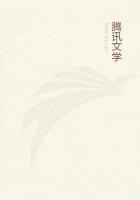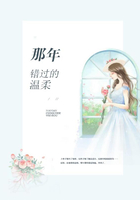The Abbe Cotin, the original of Moliere's Trissotin, stamped his books with intertwined C's. Henri III. preferred religious emblems, and sepulchral mottoes--skulls, crossbones, tears, and the insignia of the Passion. Mort m'est vie is a favourite device of the effeminate and voluptuous prince. Moliere himself was a collector, il n'es pas de bouquin qui s'echappe de ses mains,--"never an old book escapes him," says the author of "La Guerre Comique," the last of the pamphlets which flew from side to side in the great literary squabble about "L'Ecole des Femmes." M. Soulie has found a rough catalogue of Moliere's library, but the books, except a little Elzevir, have disappeared. {7}({7} M. Arsene Houssaye seems to think he has found them; marked on the fly-leaves with an impression, in wax, of a seal engraved with the head of Epicurus.) Madame de Maintenon was fond of bindings. Mr. Toovey possesses a copy of a devotional work in red morocco, tooled and gilt, which she presented to a friendly abbess.
The books at Saint-Cyr were stamped with a crowned cross, besprent with fleurs-de-lys. The books of the later collectors--Longepierre, the translator of Bion and Moschus; D'Hoym the diplomatist;McCarthy, and La Valliere, are all valued at a rate which seems fair game for satire.
Among the most interesting bibliophiles of the eighteenth century is Madame Du Barry. In 1771, this notorious beauty could scarcely read or write. She had rooms, however, in the Chateau de Versailles, thanks to the kindness of a monarch who admired those native qualities which education may polish, but which it can never confer.
At Versailles, Madame Du Barry heard of the literary genius of Madame de Pompadour. The Pompadour was a person of taste. Her large library of some four thousand works of the lightest sort of light literature was bound by Biziaux. Mr. Toovey possesses the Brantome of this dame galante. Madame herself had published etchings by her own fair hands; and to hear of these things excited the emulation of Madame Du Barry. She might not be CLEVER, but she could have a library like another, if libraries were in fashion.
One day Madame Du Barry astonished the Court by announcing that her collection of books would presently arrive at Versailles. Meantime she took counsel with a bookseller, who bought up examples of all the cheap "remainders," as they are called in the trade, that he could lay his hands upon. The whole assortment, about one thousand volumes in all, was hastily bound in rose morocco, elegantly gilt, and stamped with the arms of the noble house of Du Barry. The bill which Madame Du Barry owed her enterprising agent is still in existence. The thousand volumes cost about three francs each; the binding (extremely cheap) came to nearly as much. The amusing thing is that the bookseller, in the catalogue which he sent with the improvised library, marked the books which Madame Du Barry possessed BEFORE her large order was so punctually executed. There were two "Memoires de Du Barry," an old newspaper, two or three plays, and "L'Historie Amoureuse de Pierre le Long." Louis XV. observed with pride that, though Madame Pompadour had possessed a larger library, that of Madame Du Barry was the better selected. Thanks to her new collection, the lady learned to read with fluency, but she never overcame the difficulties of spelling.
A lady collector who loved books not very well perhaps, but certainly not wisely, was the unhappy Marie Antoinette. The controversy in France about the private character of the Queen has been as acrimonious as the Scotch discussion about Mary Stuart.
Evidence, good and bad, letters as apocryphal as the letters of the famous "casket," have been produced on both sides. A few years ago, under the empire, M. Louis Lacour found a manuscript catalogue of the books in the Queen's boudoir. They were all novels of the flimsiest sort,--"L'Amitie Dangereuse," "Les Suites d'un Moment d'Erreur," and even the stories of Louvet and of Retif de la Bretonne. These volumes all bore the letters "C. T." (Chateau de Trianon), and during the Revolution they were scattered among the various public libraries of Paris. The Queen's more important library was at the Tuileries, but at Versailles she had only three books, as the commissioners of the Convention found, when they made an inventory of the property of la femme Capet. Among the three was the "Gerusalemme Liberata," printed, with eighty exquisite designs by Cochin, at the expense of "Monsieur," afterwards Louis XVIII.
Books with the arms of Marie Antoinette are very rare in private collections; in sales they are as much sought after as those of Madame Du Barry.
With these illustrations of the kind of interest that belongs to books of old collectors, we may close this chapter. The reader has before him a list, with examples, of the kinds of books at present most in vogue among amateurs. He must judge for himself whether he will follow the fashion, by aid either of a long purse or of patient research, or whether he will find out new paths for himself. Ascholar is rarely a rich man. He cannot compete with plutocrats who buy by deputy. But, if he pursues the works he really needs, he may make a valuable collection. He cannot go far wrong while he brings together the books that he finds most congenial to his own taste and most useful to his own studies. Here, then, in the words of the old "sentiment," I bid him farewell, and wish "success to his inclinations, provided they are virtuous." There is a set of collectors, alas! whose inclinations are not virtuous. The most famous of them, a Frenchman, observed that his own collection of bad books was unique. That of an English rival, he admitted, was respectable,--"mais milord se livre a des autres preoccupations!"He thought a collector's whole heart should be with his treasures.
En bouquinant se trouve grand soulas.
Soubent m'en vay musant, a petis pas, Au long des quais, pour flairer maint bieux livre.















